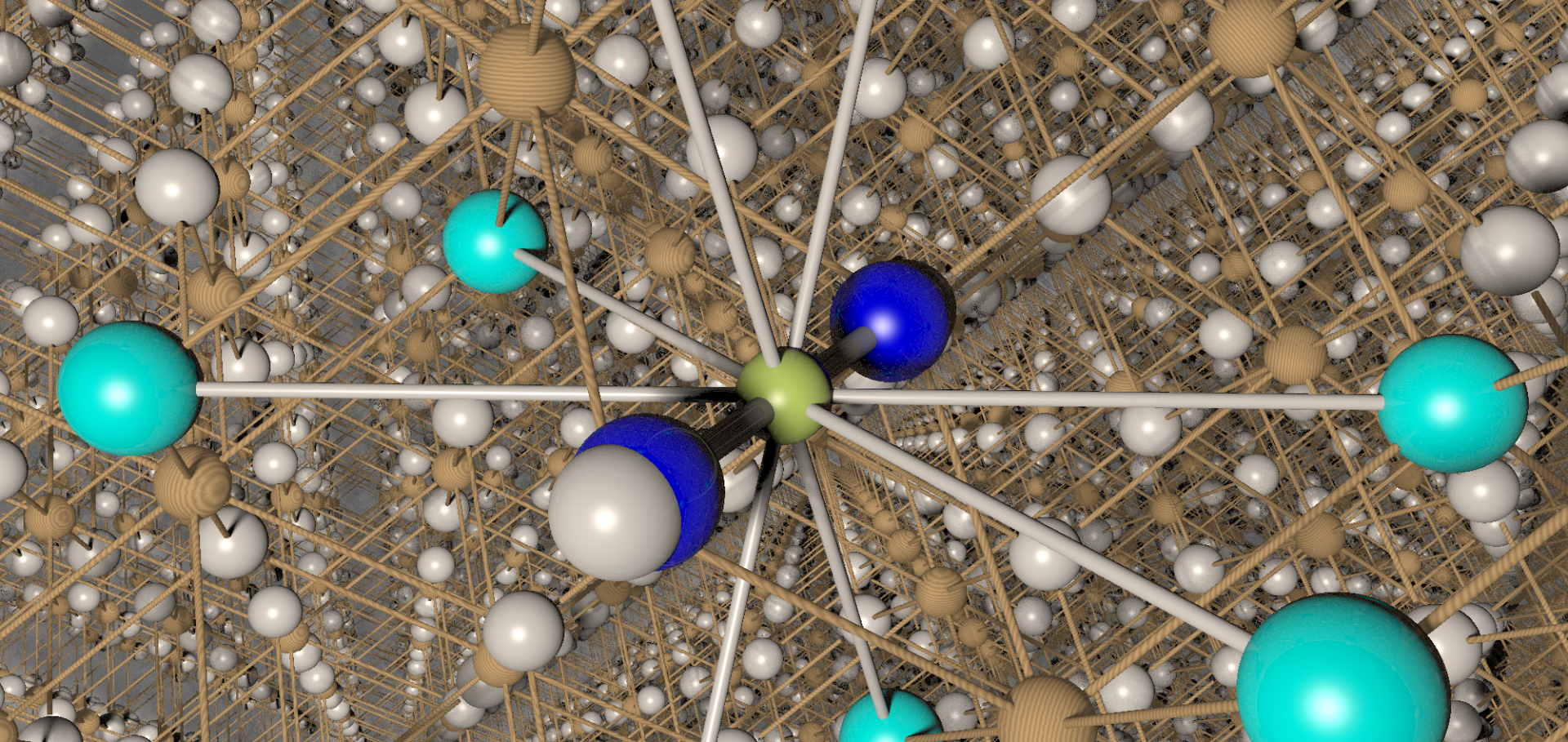Rapid synthesis of colossal magnetoresistance manganites by microwave dielectric heating
Chemical Communications (2000) 159-160
Abstract:
Colossal magnetoresistance manganites have been synthesised by the microwave dielectric heating of metal nitrates, which act both as effective microwave susceptors, and a ready source of oxidizing NO2 to induce mixed valency.BEDT-TTF superconductors studied by μSR
Physica B: Condensed Matter 289-290 (2000) 396-399
Abstract:
Muon-spin rotation (μSR) measurements have been used to study the superconducting vortex properties of the organic superconductors κ-(BEDT-TTF)2Cu(SCN)2, α-(BEDT-TTF)2NH4Hg(SCN)4 and β-(BEDT-TTF)2IBr2. These materials all have highly anisotropic structures consisting of metallic layers of BEDT-TTF molecules alternating with less well conducting anion layers. Varying the anion gives rise to a change in the anisotropy of the superconductivity and also to changes in the superconducting transition temperature. We have used both transverse and longitudinal magnetic fields to study the three-dimensional flux line lattice that is present at low temperatures and fields and to study also the loss of flux lattice order that occurs on increasing the temperature and field.Muon Korringa relaxation
Physica B: Condensed Matter 289-290 (2000) 594-597
Abstract:
Significant muon spin-lattice relaxation is found in a number of non-magnetic semimetals and metals. Measured in longitudinal magnetic field, the relaxation rate is independent of field up to several kilogauss and generally increases monotonically with temperature. This suggests a form of Korringa relaxation, originating in the hyperfine interaction between the implanted muons and the conduction electrons. Bearing in mind that NMR data on Korringa relaxation refers chiefly to the host nuclei, the muon offers a probe of conduction-electron encounter at an interstitial site, linking the topic to the nature of defect screening in metals, to relaxation by spin-density fluctuations in magnetic materials and to spin- and charge-exchange on paramagnetic muonium centres in semiconductors. Data are presented for C (graphite), Bi, Pb and Cd and compared with the Korringa predictions using known values of the muon Knight shift. Control experiments are described on Zn and Cu, both pure and deliberately doped with magnetic impurity. For graphite, an interpretation is given in terms of charge-exchange on a molecular radical formed by the chemical reaction of interstitial muonium.Muon radical states in some electron donor and acceptor molecules
Magnetic Resonance in Chemistry 38 (2000)
Abstract:
Muon radical states were studied in the electron donor molecules TTF and BEDT-TTF and in the electron acceptor molecule TCNQ. Muonium addition to double bond carbon sites results in hyperfine coupling contants ranging from 350 MHz in TTF down to 80 MHz for TCNQ. In TTF and BEDT-TTF additional radical states with extremely low hyperfine coupling constants in the 5 MHz region are observed; these are assigned to muon addition at sulphur sites accompanied by C - S bond cleavage. Copyright © 2000 John Wiley & Sons, Ltd.Spin fluctuations in the spin-Peierls compound studied using muon spin relaxation
Physical Review B - Condensed Matter and Materials Physics 61:18 (2000) 12241-12248


